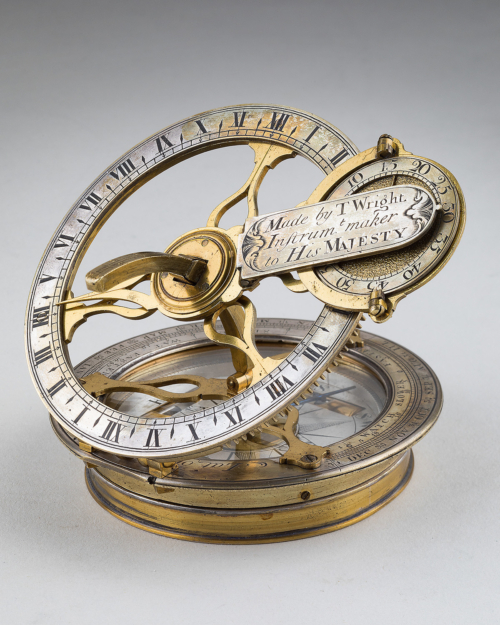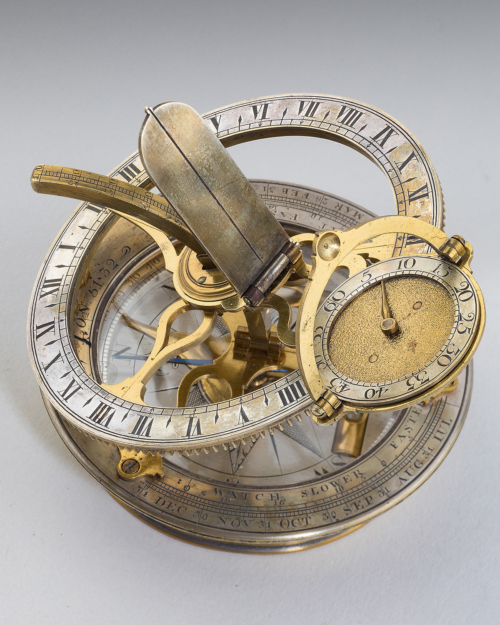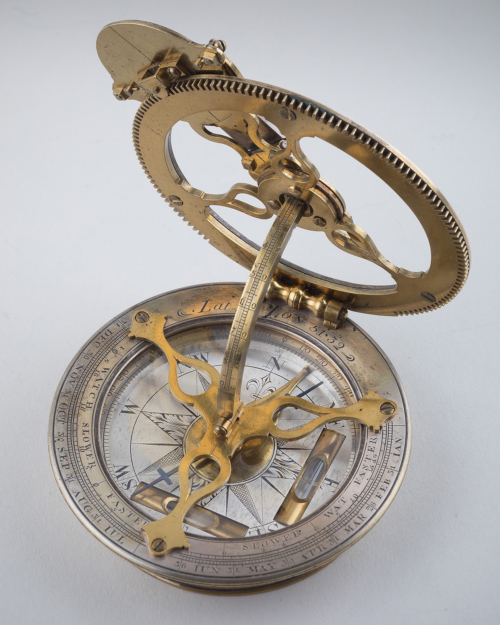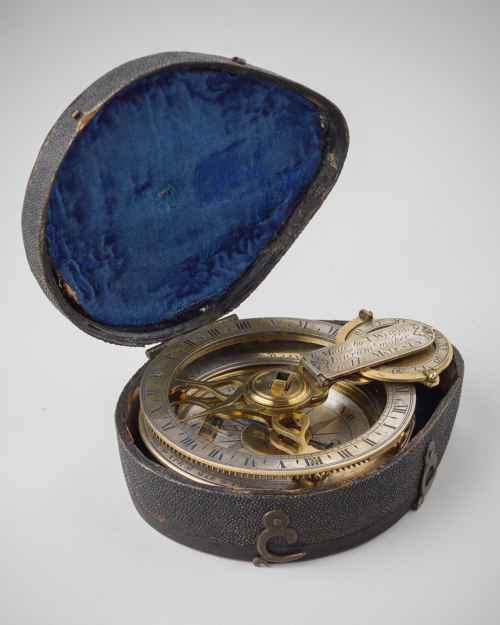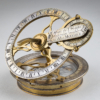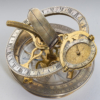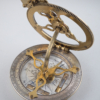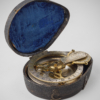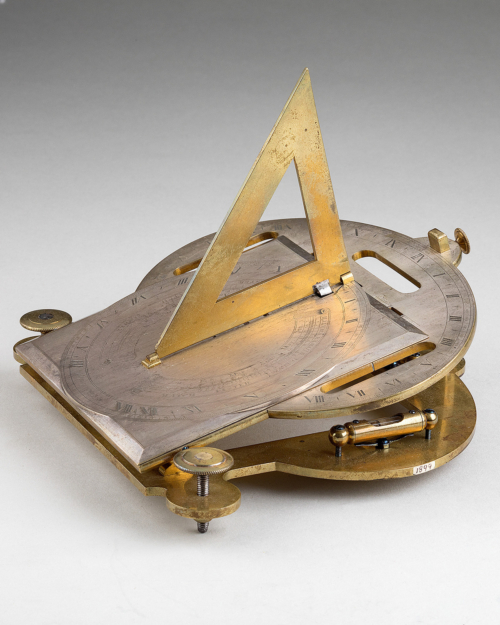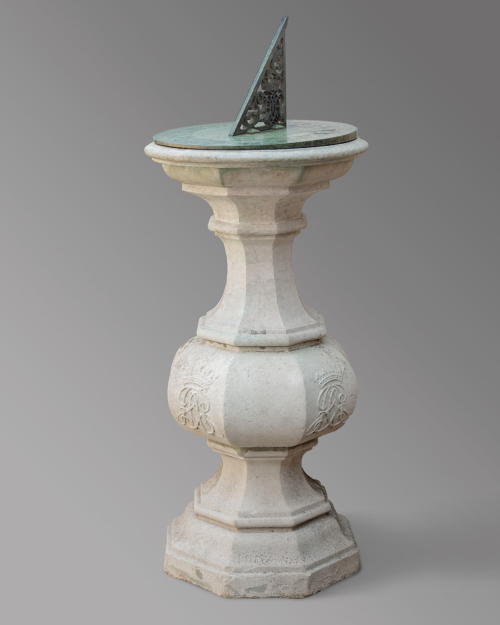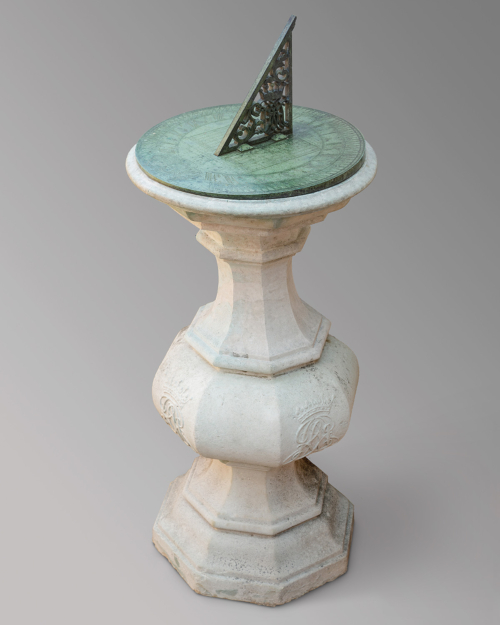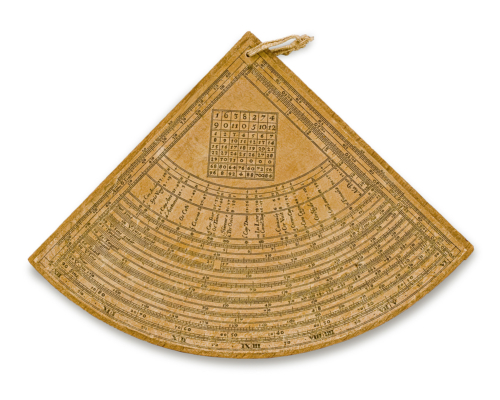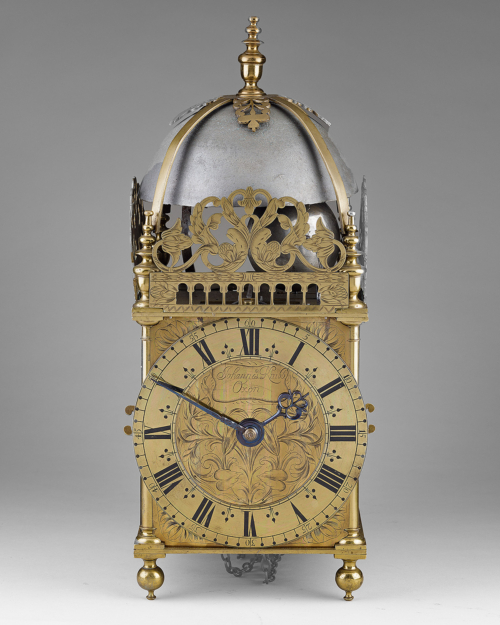| Height | 3¼ inches (79 mm) diameter of base-plate |
| Case | The original fishskin covered travel case with blue velvet lining and brass hinge. |
| Dial | Signed Made by T Wright Instrumt. Maker to His MAJESTY, the circular ‘box’ base set with a glazed compass having an 8-point rose and two inset bubble levels set at right angles, the box rim engraved with an equation of time table framing the latitude of London. Above this a three-arm mount supports, at its centre, a folding arc engraved with a 10 to 90 degree latitude scale which passes through a hole in the centre of the cut-away hour plate, trunnion hinged to the north side of the box, the underside of two-thirds of the hour ring toothed to engage with a cog-wheel on the arbor of the index to the subsidiary minute dial carried on an arm pivoted at the centre, the lower end furnishing the hour index. Mounted above this dial, on a folding arc, is a sighting pin hole used in conjunction with a line engraved at the centre of a folding vane mounted on the minute dial arm. |
| Provenance | The Time Museum, Rockford, Illinois, USA, inventory no.1522; |
| Literature | The Luxury of Time, Clocks from 1550-1750, 2019, (illus.) p.17 |
| Exhibited | Circa 1985-1999, The Time Museum, Rockford, Illinois, USA |
Exhibit № 41. Thomas Wright, London, Circa 1735
A good George II brass and silvered brass mechanical equinoctial dial with original fishskin covered case
Sold
Thomas Wright (circa 1693-1767), son of clockmaker William Wright of Southwark, apprenticed 1707 to John Rowley and free of Broderers’ Company, 1715. For a time he continued to work for Rowley, whom he eventually succeeded. He was appointed to the Livery of the Company in 1722, although Wright preferred to pay a fine rather than serve as Master. Instrument Maker to George, Prince of Wales, in whose service he continued on the prince’s accession in 1727 as George II, he served a large, fashionable clientele, with such finely executed ‘luxury’ planetary models, dials and drawing instruments as survive today. He appraised and catalogued the comprehensive collection of instruments formed by the Earl of Orrery. His workmen included his eventual successor, Benjamin Cole, he having previously been briefly in partnership with William Wyeth (d.1741).
The dial is set by rotating the central arm until a spot of sunlight passes through the pin hole to fall on the centre line of the fold-ing vane, the time then being read from the position of the indexes on the two dials.
A similar, but not identical, dial is in National Museum of American History, the Smithsonian, Washington DC, and another more at variance is in the Metropolitan Museum of Art, New York.
Product Description
Thomas Wright (circa 1693-1767), son of clockmaker William Wright of Southwark, apprenticed 1707 to John Rowley and free of Broderers’ Company, 1715. For a time he continued to work for Rowley, whom he eventually succeeded. He was appointed to the Livery of the Company in 1722, although Wright preferred to pay a fine rather than serve as Master. Instrument Maker to George, Prince of Wales, in whose service he continued on the prince’s accession in 1727 as George II, he served a large, fashionable clientele, with such finely executed ‘luxury’ planetary models, dials and drawing instruments as survive today. He appraised and catalogued the comprehensive collection of instruments formed by the Earl of Orrery. His workmen included his eventual successor, Benjamin Cole, he having previously been briefly in partnership with William Wyeth (d.1741).
The dial is set by rotating the central arm until a spot of sunlight passes through the pin hole to fall on the centre line of the fold-ing vane, the time then being read from the position of the indexes on the two dials.
A similar, but not identical, dial is in National Museum of American History, the Smithsonian, Washington DC, and another more at variance is in the Metropolitan Museum of Art, New York.
Additional information
| Dimensions | 5827373 cm |
|---|

